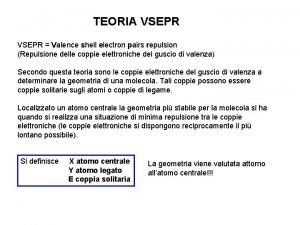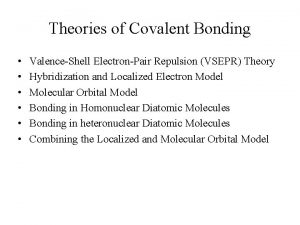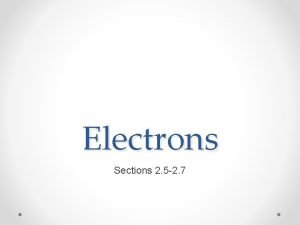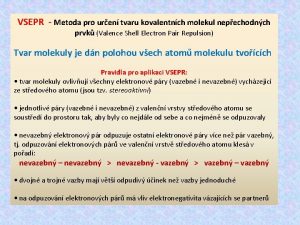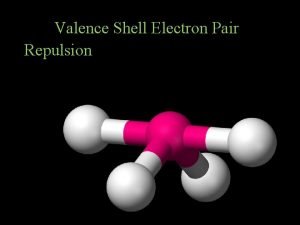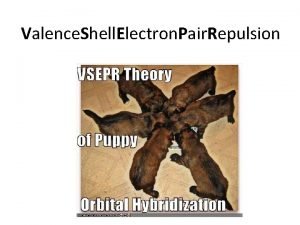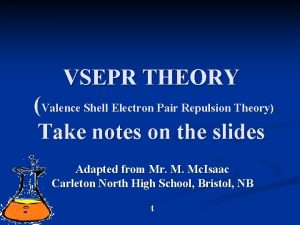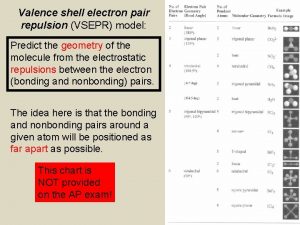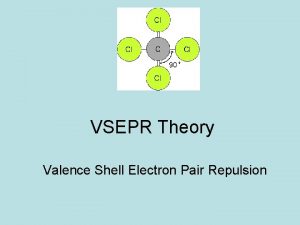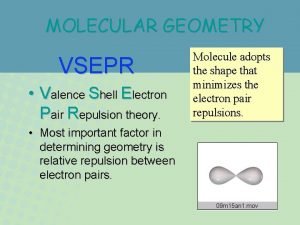A Valence Shell Electron Pair Repulsion Electron pairs











- Slides: 11


� A. Valence Shell Electron Pair Repulsion Electron pairs are repelling one another and this is why molecules have specific shapes that they form.

� Linear: when there are only two atoms or the center atom is surrounded by two atoms and has no lone pair. (180˚ bond angles) �Ex. CO 2 and O 2

� Trigonal Planar: when one atom is surrounded by three others and has no lone pair. (120˚ bond angles) �Ex. BH 3

� Trigonal Pyramidal: when the center atom is surrounded by three atoms and one lone pair. (107˚ bond angles) �Ex. NH 3

� Tetrahedral: when center atom is surrounded by four atoms and no lone pairs. (109. 5˚ bond angles) �Ex. CH 4

� Bent: when center atom is surrounded by two atoms and two lone pairs. (105˚ bond angles) �Ex. � (aka H 2 O Mickey Mouse Molecule, can you see why? )

� Electronegativity: Ability of an atom in molecule to attract electrons. � If the bond has one atom that is more electronegative than another, unequal sharing of electrons! consult electronegativity chart � subtract electronegativity values from chart � classify bond: �

Subtraction Value Bond Classification 0. 0 - 0. 4 Non-polar covalent (NPC) 0. 5 - 1. 7 Polar covalent (PC) 1. 8 - 4. 0 Ionic (I) � Non-polar: equal sharing of electrons � Polar: unequal sharing of electrons � Ionic: no sharing of electrons

� Polarity: results from having one positive and one negative part in a molecule (Polar Covalents). � More electronegative atom is partially negative, less electronegative atom is partially positive

� Polar bonds can be overall polar molecules if the molecule has a net direction of charge. � Assign vectors along the bond to assess the molecule. Molecule is � Examples: more (+) on top then on CCl 4 CHCl 3 bottom Molecule is NOT polar overall! All vectors cancel out! + -
 Geometria a cavalletto
Geometria a cavalletto Valence shell electron pair repulsion
Valence shell electron pair repulsion Shell cleanliness shell soundness shell texture shell shape
Shell cleanliness shell soundness shell texture shell shape Germinal disc in egg
Germinal disc in egg Valence shell repulsion theory
Valence shell repulsion theory Br valence electrons
Br valence electrons Full valence shell period 3
Full valence shell period 3 Valence shell
Valence shell Vsepr metoda
Vsepr metoda Ordered pair and unordered pair
Ordered pair and unordered pair Rolling pair is higher pair
Rolling pair is higher pair Trigonal pyramidal with lone pair
Trigonal pyramidal with lone pair
